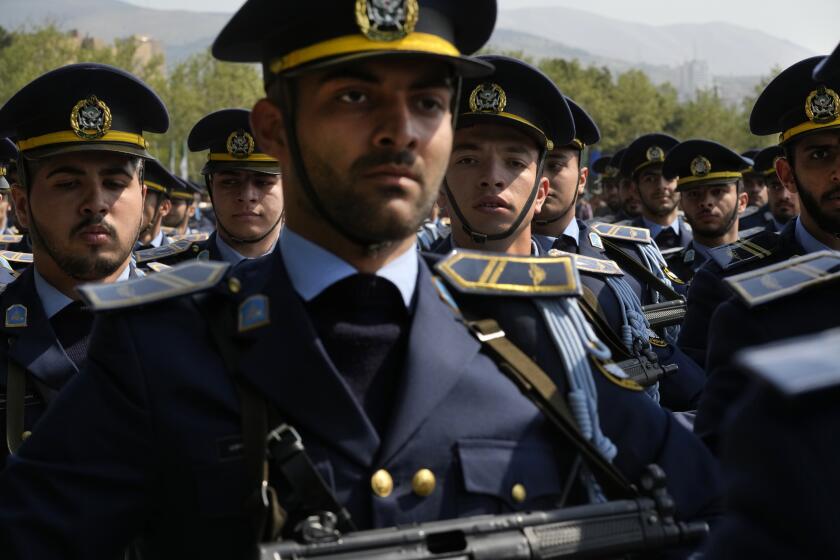The Door Is Open
The State Department cautioned this week that “many difficulties” stand in the way of a treaty to ban chemical weapons. Unresolved issues, said a spokesman, include arrangements for exchanging information on stockpiles of the weapons, and how their destruction should be monitored.
If the Great Powers truly want an agreement, however, these issues should not be insurmountable. And the Soviet Union’s show-and-tell junket last weekend for foreign diplomats, chemical weapons experts and journalists to a previously secret chemical-warfare base, plus Soviet acceptance of an invitation to visit a similar U.S. facility, offers new encouragement that Moscow does want an agreement.
Representatives of 45 nations taking part in the Geneva negotiations for a global ban on chemical weapons were taken to the base at Shikhany, 400 miles southeast of Moscow. They were shown hand grenades, rocket and artillery shells and a nine-foot-long warhead for the Scud tactical missile--all said to contain nerve gas, poison gas or other toxic chemicals.
Western defense specialists who were among the visitors were skeptical that the displayed munitions, some of which appeared to be 20 or 30 years old, were really representative of Soviet chemical-warfare stocks. But the fact that the Soviets opened their chemical arsenal to foreigners at all was a sign of continuing progress.
The Western alliance alleges that the Soviet Union has stockpiled several times as many chemical arms as the United States, which stopped production in 1969. For years, however, the Soviets, while participating in negotiations for global elimination of chemical arms, would not even confirm that they had such weapons. When Washington invited foreign experts to visit U.S. facilities for destruction of chemical arms in 1983, the Soviets declined to come.
This year, however, the Soviet position has changed dramatically. Last March they admitted that they do, indeed, possess chemical weapons. A month later Soviet leader Mikhail S. Gorbachev announced that the Soviet Union had stopped producing chemical weapons. The Soviets went on to say they would accept compulsory inspections and were, in anticipation of a treaty, building a site to destroy their stockpiles. Next month Soviet experts will visit the U.S. chemical weapons facility at Tooele, Utah, that they could have seen in 1983.
The Soviets still refuse to disclose the locations of their chemical-munitions stocks until after a global ban on such weapons is signed and ratified. The United States has long since published a list of its own chemical arsenals.
Kremlin spokesmen charged this week that U.S. plans to begin producing a new generation of chemical weapons could torpedo the Geneva chemical-arms negotiations, which resume Nov. 30. Resumption of American chemical-weapons production has been justified as an effort to jog the Soviets into acceptance of a verifiable ban on such weapons or, in the event agreement is not reached, to deter the Soviets from ever using the chemical weapons they have.
The best way to head off the U.S. resumption of production--or to halt production if it begins--is to wrap up a treaty banning production or possession of chemical weapons anywhere in the world. Fortunately, there is growing reason to believe the Soviets, despite their alarmist rhetoric, understand that.
More to Read
Sign up for Essential California
The most important California stories and recommendations in your inbox every morning.
You may occasionally receive promotional content from the Los Angeles Times.










